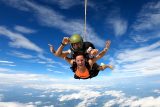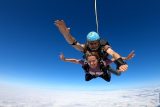What to Know About the Skydiving Exit
Blog
 Posted by: Curtis White
3 years ago
Posted by: Curtis White
3 years ago
Technically speaking, there is really only one thing separating you from the excitement of soaring through the wild blue yonder — the door of the aircraft!
In our sport, “the skydiving exit” refers to the transition of leaving the door of the airplane, encountering the relative wind, and moving into freefall. We’ve found that one of the primary ways to capitalize on the skydiving experience and to get the most out of your jump starts right from the skydiving exit.
As both a tandem student and a student in our AFF program, the skydiving exit is a pivotal piece of the “successful skydive puzzle.” Later, if you continue with your skydiving journey, as a licensed skydiver you’ll have ample opportunity to experiment with fun skydiving exits. Ready to see what your high-flying future has in store? This is all that you need to know about the skydiving exit.
Keys to A Good Skydiving Exit
Exiting the aircraft may not seem that difficult: you just get out of the plane, right? Well, not exactly. While the above sentiment is somewhat true, there is quite a bit of technique involved in a good skydiving exit, whether as a tandem skydiver or a skydiving student.
A good skydiving exit is quick, efficient, and, of course, safe. It is important to clear the door, avoiding bumping your head and, likewise, protecting your arms by keeping your hands on your harness until your instructor gives you the signal to open them. Particularly for tandem and student skydivers, it is crucial that you assume a nice, strong arched body position upon exiting the airplane. This body position allows for a stable exit and a stable freefall.
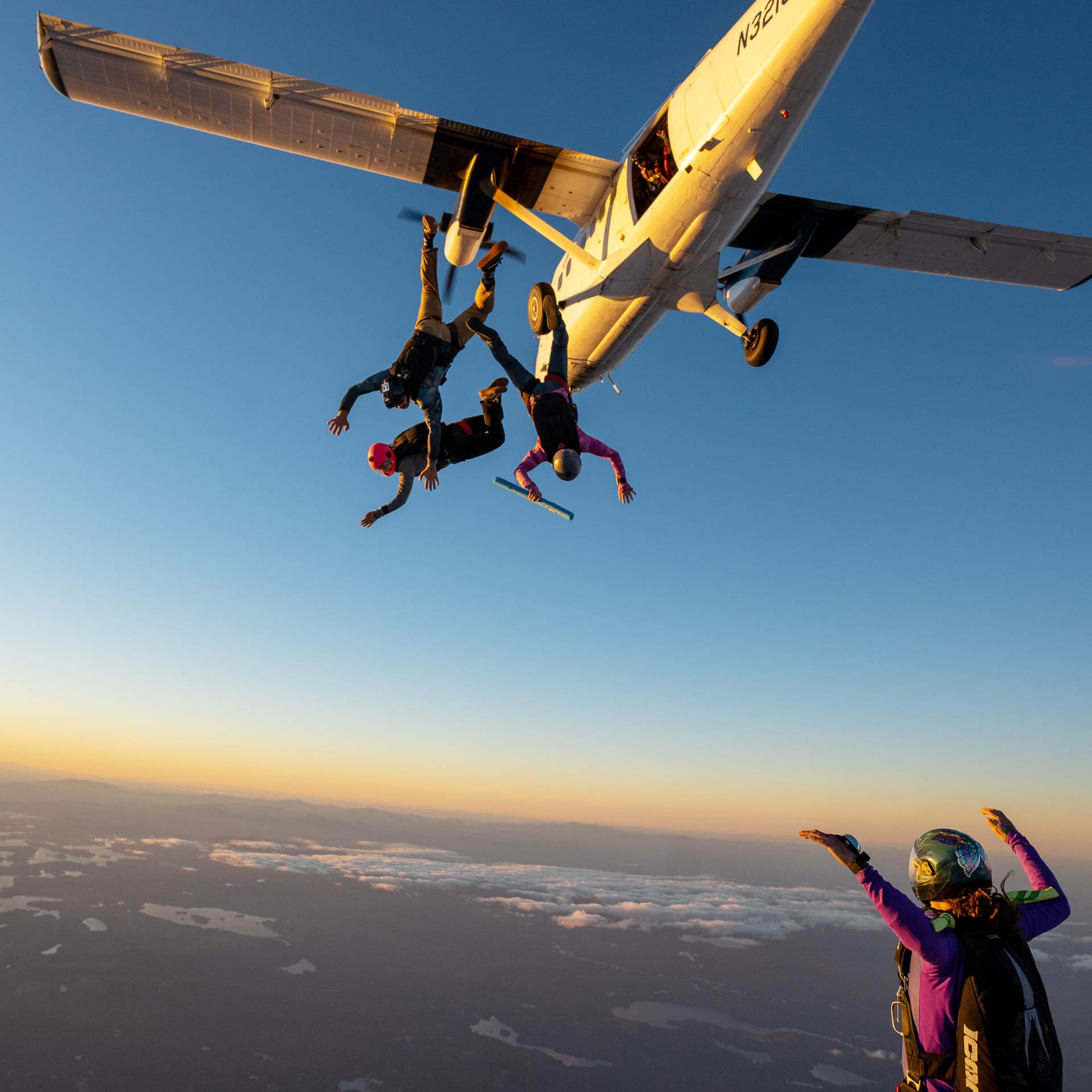
Different Skydiving Exit Techniques
There are three common skydiving exits: the poised skydiving exit, the diving skydiving exit, and the gainer skydiving exit.
- Poised Skydiving Exit: On a poised skydiving exit from a turbine aircraft with a side door, a tandem pair will crouch facing out of the side door turned toward the prop/ front of the aircraft. On exit, the pair will rotate parallel with the plane, facing the prop. In a poised floater skydiving exit for a student skydiver or licensed skydiver, the individual will generally climb outside of the aircraft, holding on to the inside bar. The individual will then step off, presenting their belly to the relative wind facing the front of the aircraft, with their head high, and feet somewhat perpendicular to the ground.
- Diving Skydiving Exit: The idea of the diving skydiving exit is similar to diving into a pool of water – except that we must take the relative wind into account. On a diving skydiving exit, a skydiver will exit the aircraft turned slightly toward the tail of the plane with their right side high.
- Gainer Skydiving Exit: The gainer skydiving exit is a popular skydiving exit amongst particularly adventurous participants. However, it should be noted that the ability to do a gainer skydiving exit on a tandem skydive depends upon the equipment that is being used (it is not an approved exit for all tandem skydiving systems) and the comfort level of the instructor. The skydiving exit technique is essentially the same for tandem, AFF, and licensed skydivers. On a gainer skydiving exit, the skydiver will rotate toward the tail of the aircraft as they come through the side door, completing half of a backward rotation until they end up presented to the relative wind in a right side high/head low position similar to the diving skydiving exit.
Skydiving Exit Altitude
At Skydive New England, the typical skydiving exit altitude for tandem skydivers, AFF students, and licensed skydivers is 14,000 feet. However, student skydivers and licensed skydivers may exit at a lower altitude if they are going to do what we call a “hop-n-pop.” A hop-n-pop is a low-altitude skydive where the skydiver deploys their parachute shortly after exiting the plane, generally within 3 to 5 seconds of exit. These lower altitude skydives typically occur between 3,000 and 5,500 feet.
Skydiving Exit Order
You may be surprised to learn that skydivers do not exit in random order. Rather, there is a specific skydiving exit order which is used to ensure maximum horizontal separation between groups and to prevent skydiving groups from opening too close to each other.
The first group to exit will usually be an angle or movement group, followed by belly or relative work group jumpers (with the jumpers exiting in order from largest group number to smallest group number), then freefly groups (again largest to smallest group number), AFF students, tandem students, and wingsuiters.
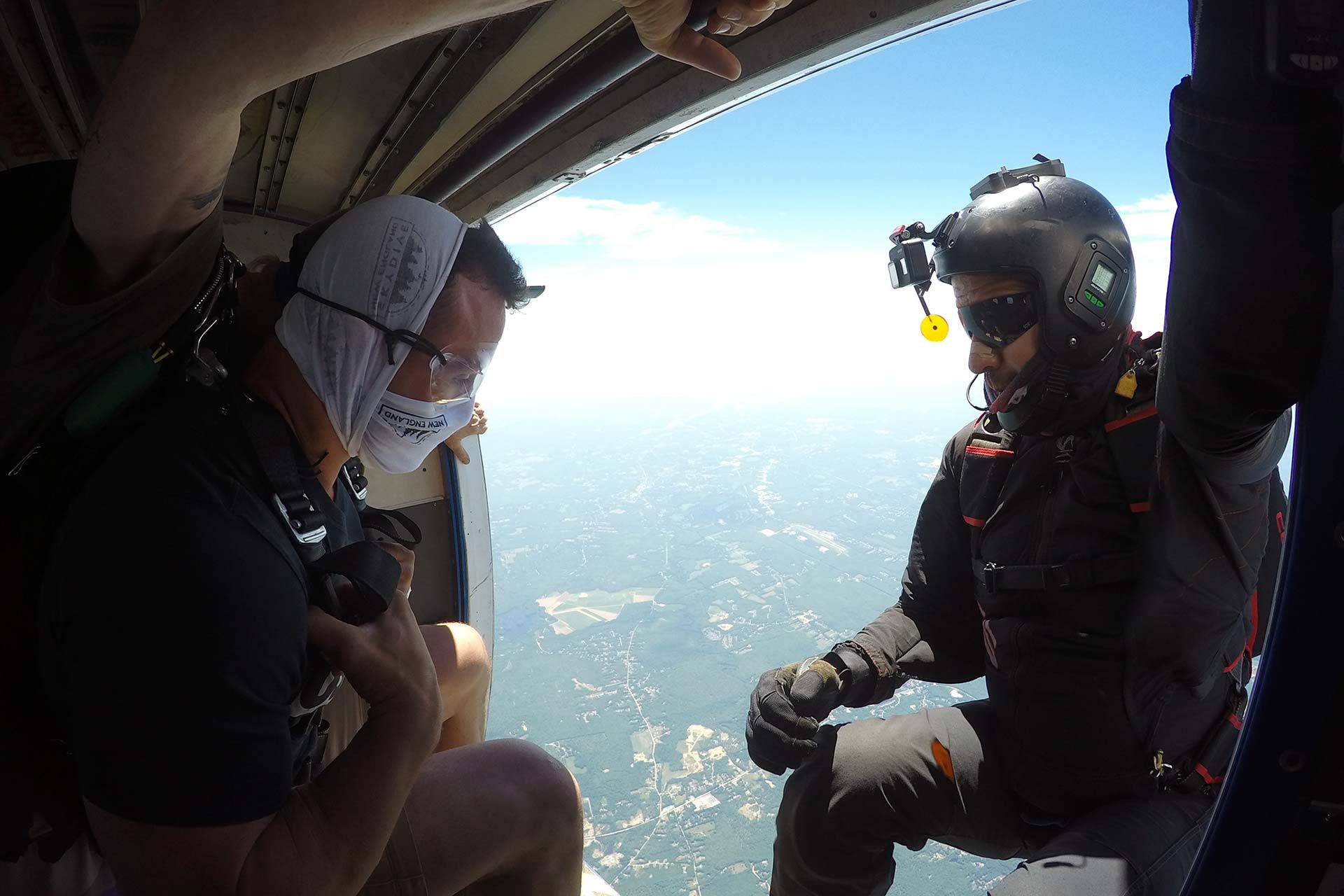
Fun Skydiving Exits
Skydivers are a creative group, and over time, we’ve invented several super fun skydiving exits. A few of the most notable skydiving exits are the horny gorilla skydiving exit, the tube skydiving exit, and the wingsuit rodeo.
- Horny Gorilla Skydiving Exit: In the horny gorilla skydiving exit, three or more jumpers intertwine their legs and exit the aircraft at the same time. Once this tangle of lower extremities settles out, the jumpers are in a seated position. The final trademark of the horny gorilla skydiving exit is that everyone beats their chest like a gorilla!
- Tube Skydiving Exit: The tube skydiving exit is a strange-looking affair typically done with three people. The first person lies on their back with their lower leg hanging out of the edge of the door. The second person crouches over and grabs the leg straps of the jumper that’s laying down. The third jumper assumes a squatted position, grabbing the leg straps of the second jumper and allowing the jumper laying down to grab their leg straps. As this mass of jumpers exits the aircraft, they begin to spin like a record! Hold on!! It’s one crazy ride!
- Wingsuit Rodeo: The wingsuit rodeo requires a highly experienced and skilled wingsuit flier. In this skydiving exit, a jumper will ride another skydiver wearing a wingsuit, typically exiting from a poised floater skydiving exit position. On the skydive, the jumper will straddle and hold on to the wingsuiter much like a cowpoke would ride a bucking bronco or rodeo bull!
There’s nothing to it but just to do it! Show us your best skydiving exit, and schedule a skydive with Skydive New England today!
Categories:
You May Be Interested In:
Enter to Win a Free Skydive
Join our email list and enter to win a free tandem skydive. Drawings in April and December; winner announced on social media.
You’ll get a $10 coupon toward a tandem just for signing up! Must be 18 and under 240 lbs to jump.
*By submitting this form, you are consenting to receive marketing emails from Skydive New England, 40 Skydive Lane, Lebanon, Maine 04027. You can revoke your consent by using the SafeUnsubscribe link located at the bottom of every email. Emails are serviced by Constant Contact.
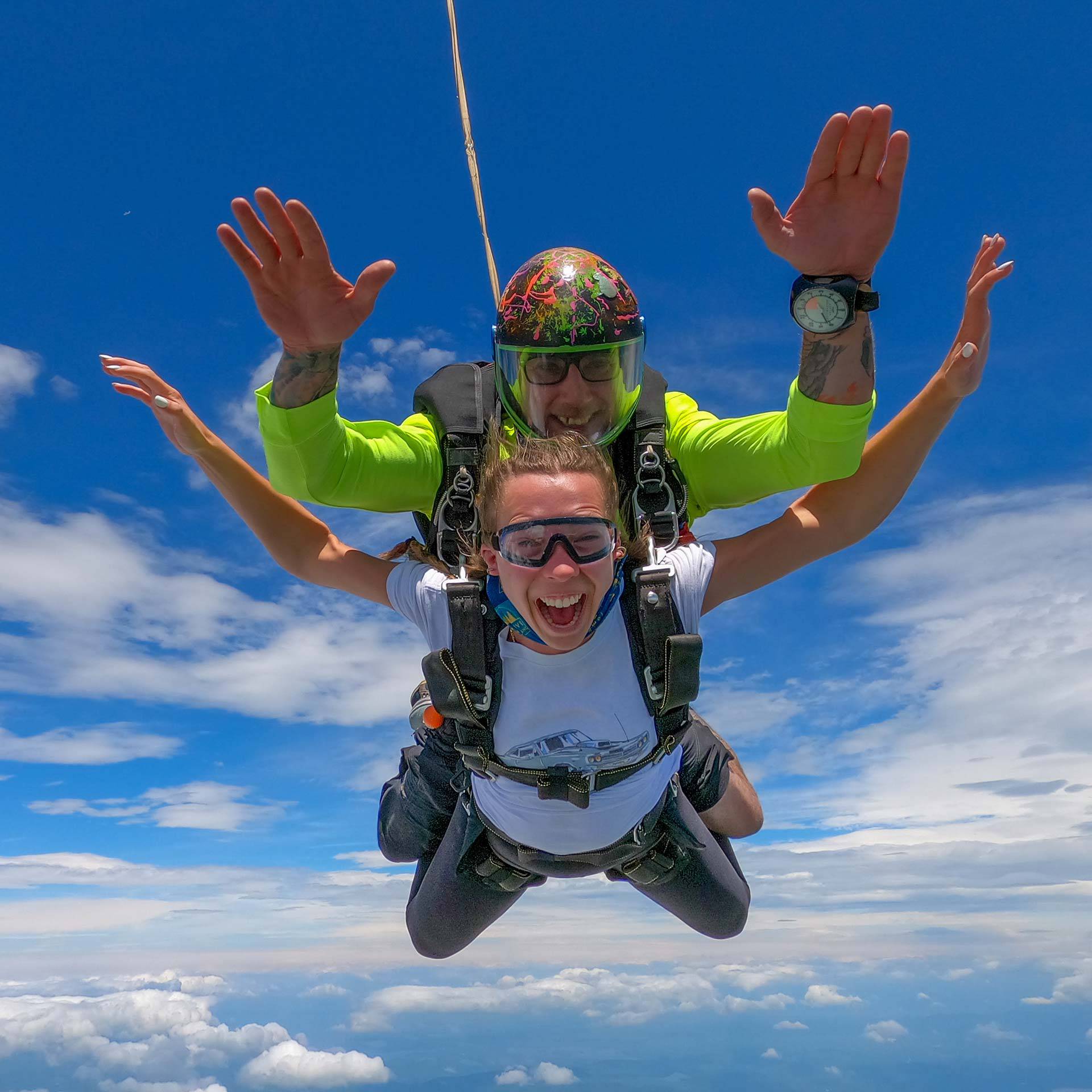
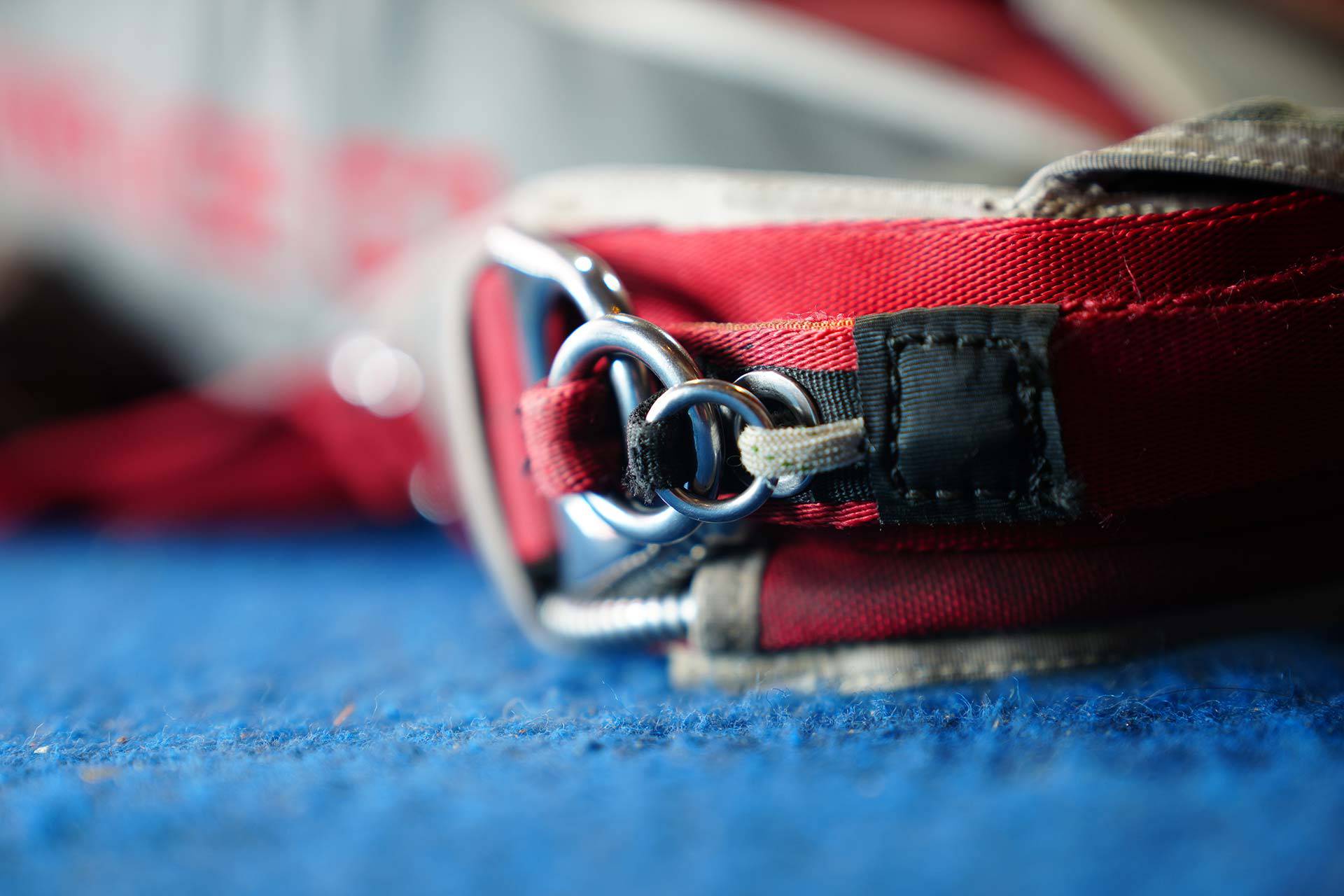
Even More Wicked-Fun Than It Looks!
Come see why the biggest DZ in New England is also the best.

